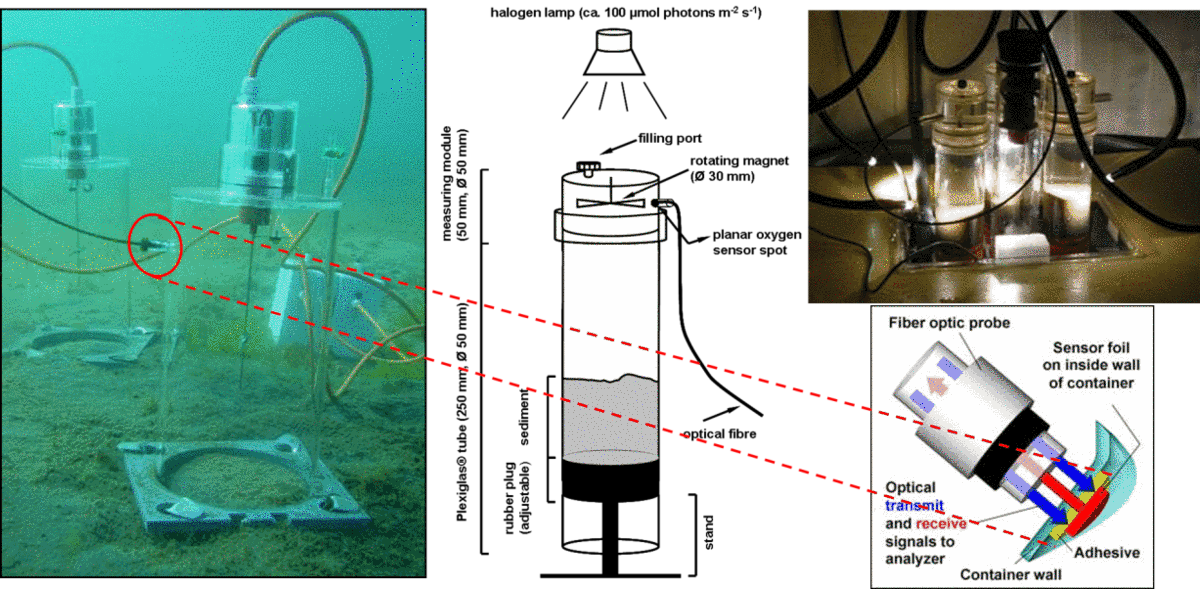B4: Oxygen dynamics and material cycling at the sediment-water interface
supervised by Forster, Sokolova, Voss, and Brede

Focus
We aim to better understand the roles of physical and biological transport of oxygen, particularly its temporal dynamics affecting bacterial respiration and biogeochemical zonation in coastal sediments. We will examine how diurnal change in oxygen produced by diatom-dominated microphytobenthos, coupled with advective pore water flows, affects oxygen uptake and respiration rates in permeable sediments. In another setting, we will combine field observation and laboratory experiments to assess benthic macrofauna colonialization and their effect on oxygen dynamics and benthic solute exchange through bioirrigation in early stages of newly flooded terrestrial soil. Both situations are characterized by non-steady oxygen supply and fluctuating redox conditions.
State of the art
In the marine coastal zone, oxygen represents an excellent tracer for biological activity and is a key measure when evaluating the cycling of essential elements such as carbon, nitrogen, phosphorus, sulfur, and metals. In most of the permeable sand of shallow waters, O2-availability is controlled by microphytobenthic oxygen production, transport by advective pore water flow, and pumping benthic macrofauna (bioirrigation). As a consequence, the geochemical process of material cycling in the sediment-water interface (SWI) is subject to oscillating redox conditions, which might create local hotspots of oxygen uptake (microniches) and induce priming. Marine sands and freshly inundated terrestrial soil represent distinctly dissimilar settings with differences in organic substrates, different oxygen transport processes and different spatial and time scales of oxygenation. While many principles of physically driven and fauna-mediated oxygen transport-reaction are known, little is known about O2 dynamics in combination with the microphytobenthos and bioirrigation in specific situations such as in a freshly inundated terrestrial soil.
Work program
Our focus will be to conduct laboratory investigations of oxygen dynamics associated with microphytobenthic primary production in advective pore water flow. Using the light-dark shift method and varying advective pore water flow in benthic chamber incubation, oxygen evolution and its spatiotemporal dynamic will be depicted and quantified with oxygen microprofiling and planar optodes. This work will be in close collaboration with B2 (microphytobenthos), H4 (exchange in permeable sands) and G5 (N-cycling).
In a recently flooded coastal peatland area we will concentrate on the macrofauna colonizing this former terrestrial soil and influencing oxygen dynamics through bioirrigation. In laboratory experiment, we will simulate how common polychaeta (e.g., Hediste diversicolor) survive, perform ventilation, and modify this terrestrial soil into marine character by means of tracer incubation, planar optode, and nutrients analysis. In this study collaboration will be with H4 and G5, while in laboratory experiments will be established with B5.
PhD-candidate
